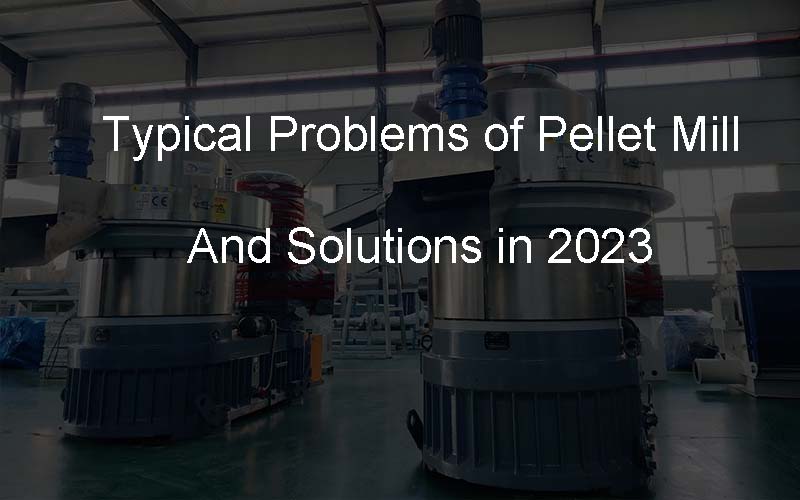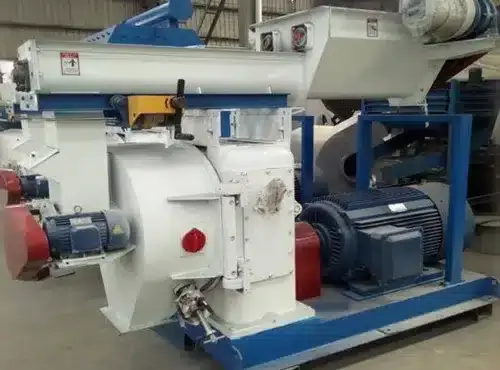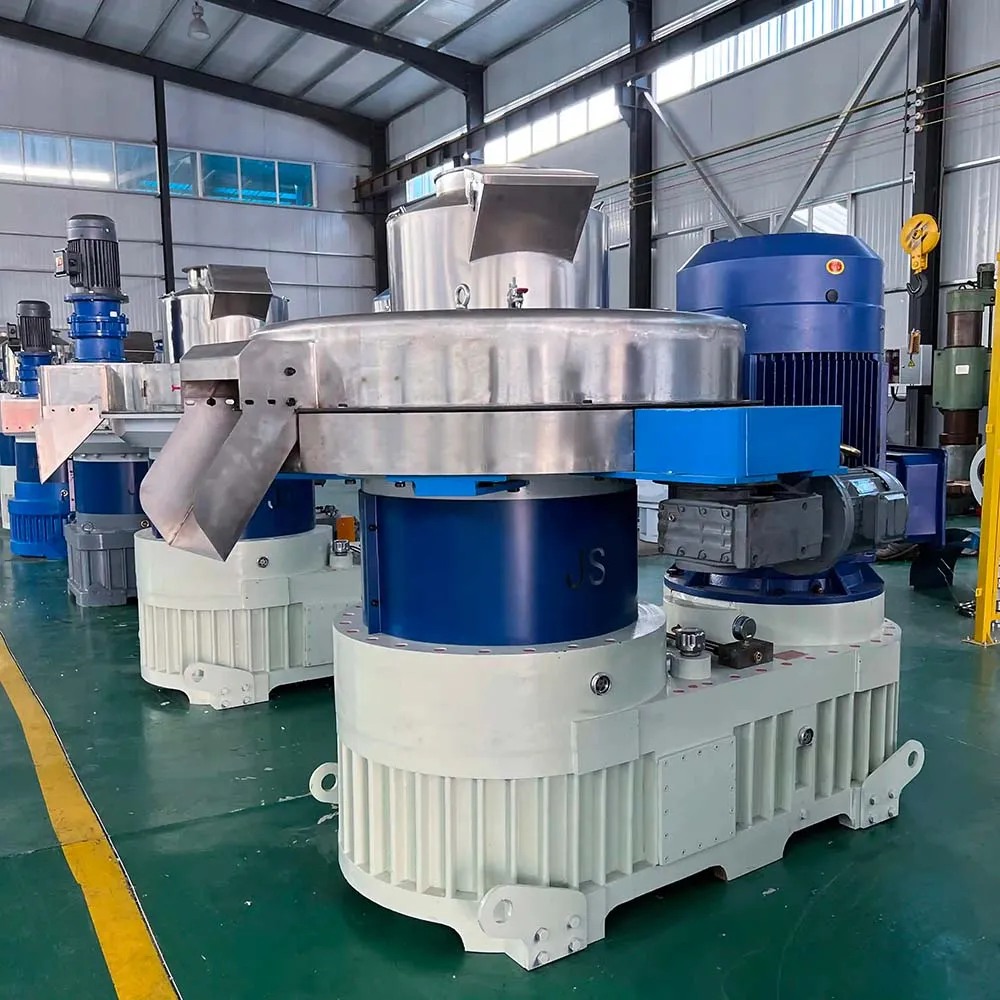
Pellet Mill Machine: Typical Problems And Solutions In 2023
There are a number of challenges in using pellet mills, pellet mill users will face a range of typical issues that can hinder their production processes.
Inconsistent pellet quality, dust emissions, high energy consumption and equipment failures all impact efficiency, productivity and overall profitability.
In this article, we’ll look at the most common problems encountered in pellet mills and provide practical solutions to fix them.
By adopting proper maintenance practices, optimizing operating parameters and implementing effective strategies, operators can overcome these challenges and increase pellet production.
We will introduce TCPEL, a leading B2B pellet mill company, and its solutions to help users overcome these problems. So let’s explore the typical problems of pellet mills in 2023 and find possible solutions to overcome them.

How Does a Pellet Mill Work
Before delving into the specific problems of pellet mills, it is important to understand operation of pellet mill.
Pellet mills can transform raw materials to pellets. Including wood pellets, biomass pellets. These pellets can be used for various purpose. Such as fuel, animal feed.
The raw materials will be pelleting by pellet machines, into cylindrical pellets. There is a series of process, heated, moistened, and treated.
Pellet mills consist of several components, including a feeder, conditioner, pellet die, rollers, and a motor. The feeder ensures a consistent flow of raw materials into the machine, while the conditioner adds moisture and heat to aid in the pelletization process.
The pellet die and rollers exert pressure and compression on the materials, shaping them into pellets of the desired size and density. The motor provides the necessary power to drive the machine’s operation[1].
If you want to find the best way to solve the problems during processing, please know more about the basics of pellet mill.
By having a deep understanding of how the machine works and its key components, operators can better troubleshoot issues and implement effective solutions.
In the following sections, we will explore the common problems faced by pellet mills in 2023 and provide practical solutions to overcome them.

Feed pellet mills: Pellet Quality of Inconsistent
One common issue encountered while using a pellet mill is inconsistent pellet quality. Pellets may vary in size, density, and durability, which can affect their performance and market value.
Inconsistent pellet quality can lead to customer dissatisfaction and decreased profitability.
Solution
To address this problem, it is crucial to ensure that the raw materials are properly processed and conditioned before entering the pelletizing chamber.
Controlling the moisture content, particle size, and temperature of the material can significantly improve pellet quality. Proper conditioning helps to soften the raw material, making it easier to form into pellets[2].
Additionally, using high-quality pellet mill dies and regularly inspecting and maintaining them can contribute to consistent pellet quality.
Wood pellet mills: Blockage of the Pellet Die
Another challenge faced by pellet mill operators is blockage or clogging of the pellet die. This can occur due to factors such as high moisture content, excessive material accumulation, or foreign objects entering the die.
Blockage of the die disrupts the pellet production process and requires frequent machine shutdowns for cleaning.
Solution
To prevent blockage, it is important to monitor and maintain the proper moisture content of the raw materials. Excessive moisture can cause the material to stick together and clog the die[3].
Regularly inspecting the die for any signs of clogging or damage and cleaning it thoroughly can help avoid disruptions in production.
Additionally, implementing proper feeding techniques, such as using uniform and consistent feed rates, and using suitable additives can contribute to smoother operation and reduce the risk of die blockage.
Pellet mill Machine: Low Pellet Production Rates
Pellet mills often experience issues related to low pellet production rates. Factors such as inefficient compression, inadequate die thickness, or worn-out parts can contribute to lower output.
Low production rates can hinder the ability to meet customer demands and limit revenue generation.
Solution
To increase pellet production, it is crucial to optimize the compression process by adjusting the pellet mill’s parameters, such as die thickness, roller pressure, and conditioning temperature.
The die thickness should be suitable for the specific raw material being processed to ensure proper compression and pellet formation[4].
Regularly inspecting and replacing worn-out parts, such as rollers and dies, is also important for maintaining optimal performance.
Additionally, ensuring that the pellet mill is properly lubricated and aligned can contribute to improved production rates.
Pellet mill manufacturers: Dust Emission
Dust emission is a significant and widespread concern that operators need to address when operating pellet mills. The presence of excessive dust in the production facility can create a range of problems with serious consequences.
Firstly, it poses health hazards to operators who are exposed to the airborne particles on a daily basis. Inhaling dust can lead to respiratory issues and other health complications, jeopardizing the well-being of the workforce.
Dust accumulation can interfere with the proper functioning of the pellet mill equipment. When dust settles on sensitive components, such as motors, belts, and control systems, it can cause malfunctions, breakdowns, and unplanned downtime.
This not only disrupts the production process but also results in increased maintenance costs and reduced overall efficiency.
Excessive dust can negatively impact the working environment, making it uncomfortable for operators. Dust-laden air can reduce visibility, create discomfort, and affect the general cleanliness of the facility.
Additionally, if not properly controlled, dust emissions can lead to non-compliance with regulatory standards and environmental regulations, potentially resulting in fines and penalties.
Solution
To mitigate dust emission, implementing effective dust collection systems, such as cyclones or bag filters, is essential. These systems capture and contain the dust generated during the pelletizing process.
Regularly cleaning and maintaining the equipment, including the pellet mill and associated ventilation systems, can significantly reduce dust levels. Proper handling and storage of raw materials can also help minimize dust generation.
Using low-dust or pre-conditioned materials can further reduce the amount of dust produced. It is important to train operators on proper dust control procedures and provide them with appropriate personal protective equipment to ensure a safe working environment.
Pellet mill manufacturers: Energy Consumption
Some pellet mills encounter issues related to excessive energy consumption. This can lead to increased operating costs and reduce the overall efficiency of the machine.
High energy consumption can strain the power supply, increase carbon emissions, and impact the sustainability of the pellet production process.
Solution
To address high energy consumption, it is crucial to optimize the pellet mill’s operation parameters. Adjusting factors such as roller speed, die thickness, and material conditioning can help achieve better energy efficiency.
By finding the right balance between compression force and energy input, operators can maximize pellet production while minimizing energy usage. Regular maintenance, including lubrication and alignment of the machine, is also important for reducing energy wastage.
Upgrading to more energy-efficient components and using advanced control systems can further contribute to energy savings.
Pellet mill machines: Pellet Mill Overload
A common problem faced by pellet mill operators is pellet mill overload or jamming, which can occur due to factors such as foreign objects, improper material feeding, or equipment malfunction.
Overload or jamming can cause downtime, production delays, and damage to the pellet mill components.
Solution
To prevent overload and jamming, it is essential to implement proper material handling and feeding techniques. Operators should ensure that the raw materials are free from contaminants such as stones, metals, or oversized particles that can cause blockages.
Regular inspection of the feeding system and equipment, including the feeder and conditioner, is necessary to identify and address any issues promptly. Implementing safety measures such as metal detectors or magnetic separators can help prevent foreign objects from entering the pellet mill.
Additionally, operators should follow the manufacturer’s guidelines for operating the pellet mill within its specified capacity to avoid overloading.
Pellet mill die: Pellet Hardness
Uneven pellet hardness is a common issue encountered in pellet mills. It refers to variations in the density and hardness of the produced pellets. Inconsistent hardness can affect the quality of the pellets and their performance during combustion or animal feed applications.
Solution
To address uneven pellet hardness, it is important to ensure proper conditioning and compression of the raw materials. Maintaining a consistent moisture content throughout the pelletization process is crucial for achieving uniform pellet hardness.
Additionally, adjusting the roller pressure and die thickness can help control the density and hardness of the pellets. Regularly inspecting and maintaining the pellet mill’s components, such as rollers and dies, is also important for ensuring consistent pellet quality.
Pellet mill machines: Pellet Mill Noise
Vibration and noise issues are commonly experienced in pellet mills, which can impact the working environment and potentially damage the equipment.
Excessive vibration can lead to accelerated wear and tear on the machine, while high noise levels can cause discomfort and hearing damage to operators.
Solution
To mitigate vibration and noise problems, it is important to ensure that the pellet mill is properly installed and aligned. Proper alignment helps minimize vibration and ensures smooth operation.
Regularly inspecting and maintaining the machine’s components, including bearings and belts, can also reduce vibration levels.
Implementing soundproofing measures, such as enclosing the pellet mill or using acoustic barriers, can help reduce noise emissions. Lubricating moving parts, such as bearings, can also contribute to smoother operation and reduced noise levels[5].
By addressing the issues of uneven pellet hardness and vibration/noise, operators can enhance the overall efficiency and performance of their pellet mills, leading to improved pellet quality and a better working environment.
Pellet mill die: Blockage Due to High-Fiber Materials
When using high-fiber materials, such as certain types of agricultural residue or biomass, pellet mills may encounter issues with die blockage. The high fiber content can lead to the formation of stubborn blockages within the pellet die, hindering the pellet production process.
Solution
To overcome die blockage caused by high-fiber materials, it is important to implement effective material preparation techniques. Pre-processing the raw materials, such as by grinding or chipping, can help reduce the fiber length and facilitate smoother pellet production.
Additionally, adjusting the moisture content and using suitable binders or additives can enhance the flowability of the materials and prevent die blockage. Regularly inspecting and cleaning the pellet die is also crucial for maintaining uninterrupted pellet production.
Pellet mill machines: Wear and Tear
Over time, pellet mills may experience wear and tear on their components, impacting their performance and longevity[3]. Factors such as the abrasiveness of the raw materials, improper maintenance, or prolonged usage can contribute to increased wear on critical parts of the machine.
Solution
To address the issue of wear and tear, regular maintenance and inspection of the pellet mill are essential. This includes lubricating moving parts, replacing worn-out components such as rollers and dies, and ensuring proper alignment of the machine.
Using high-quality and durable parts, as well as implementing preventive maintenance schedules, can help prolong the lifespan of the pellet mill and maintain its optimal performance.
Conclusion
In conclusion, operating a pellet mill in 2023 presents various challenges that can impact the efficiency and productivity of the machine.
By addressing the typical problems discussed in this article, such as inconsistent pellet quality, die blockage, low production rates, dust emission, high energy consumption, overload/jamming, uneven pellet hardness, vibration/noise, and wear and tear, operators can overcome these hurdles and optimize their pellet production processes.
To achieve consistent pellet quality, operators should focus on proper material conditioning, die maintenance, and equipment optimization.
Implementing effective dust collection systems and adhering to safety protocols can help mitigate dust emission and ensure a healthy working environment. By optimizing energy usage and preventing overload or jamming, operators can enhance the efficiency and sustainability of their operations.
Moreover, addressing issues like uneven pellet hardness, vibration, and noise can improve the overall performance and longevity of the pellet mill.
For operators seeking reliable pellet machines and comprehensive solutions, TCPEL is a trusted B2B pellet machine company. With their state-of-the-art pellet machines and expertise in the industry, TCPEL offers reliable equipment and services to help operators overcome the challenges discussed in this article.
To learn more about TCPEL’s pellet machines and how they can enhance pellet production processes, visit TCPel’s website. Explore their range of pellet machines at TCPel’s pellet machine page or learn about their feed pellet machine solutions at TCPel’s feed pellet machine page.
Partnering with TCPEL ensures access to cutting-edge technology and support, empowering operators to optimize their pellet production and achieve success in the industry.
Talk to An Expert
SHARE THIS POST
Talk to An Expert
